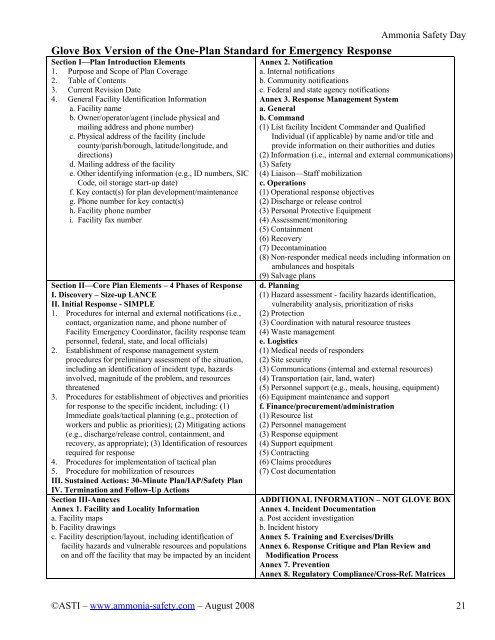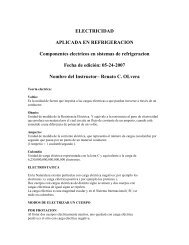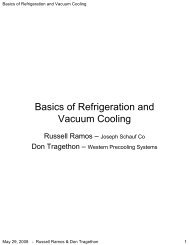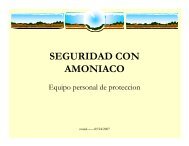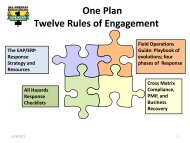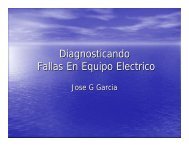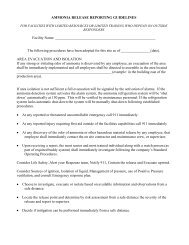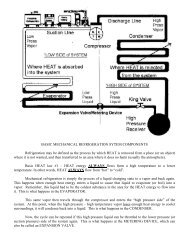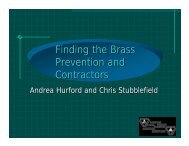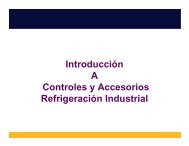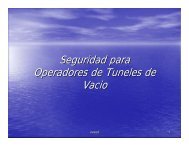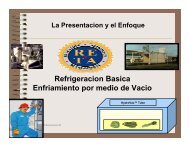Awareness Training Goals - Salinas Valley Ammonia Safety Day
Awareness Training Goals - Salinas Valley Ammonia Safety Day
Awareness Training Goals - Salinas Valley Ammonia Safety Day
Create successful ePaper yourself
Turn your PDF publications into a flip-book with our unique Google optimized e-Paper software.
Glove Box Version of the One-Plan Standard for Emergency Response<br />
Section I—Plan Introduction Elements<br />
1. Purpose and Scope of Plan Coverage<br />
2. Table of Contents<br />
3. Current Revision Date<br />
4. General Facility Identification Information<br />
a. Facility name<br />
b. Owner/operator/agent (include physical and<br />
mailing address and phone number)<br />
c. Physical address of the facility (include<br />
county/parish/borough, latitude/longitude, and<br />
directions)<br />
d. Mailing address of the facility<br />
e. Other identifying information (e.g., ID numbers, SIC<br />
Code, oil storage start-up date)<br />
f. Key contact(s) for plan development/maintenance<br />
g. Phone number for key contact(s)<br />
h. Facility phone number<br />
i. Facility fax number<br />
Section II—Core Plan Elements – 4 Phases of Response<br />
I. Discovery – Size-up LANCE<br />
II. Initial Response - SIMPLE<br />
1. Procedures for internal and external notifications (i.e.,<br />
contact, organization name, and phone number of<br />
Facility Emergency Coordinator, facility response team<br />
personnel, federal, state, and local officials)<br />
2. Establishment of response management system<br />
procedures for preliminary assessment of the situation,<br />
including an identification of incident type, hazards<br />
involved, magnitude of the problem, and resources<br />
threatened<br />
3. Procedures for establishment of objectives and priorities<br />
for response to the specific incident, including: (1)<br />
Immediate goals/tactical planning (e.g., protection of<br />
workers and public as priorities); (2) Mitigating actions<br />
(e.g., discharge/release control, containment, and<br />
recovery, as appropriate); (3) Identification of resources<br />
required for response<br />
4. Procedures for implementation of tactical plan<br />
5. Procedure for mobilization of resources<br />
III. Sustained Actions: 30-Minute Plan/IAP/<strong>Safety</strong> Plan<br />
IV. Termination and Follow-Up Actions<br />
Section III-Annexes<br />
Annex 1. Facility and Locality Information<br />
a. Facility maps<br />
b. Facility drawings<br />
c. Facility description/layout, including identification of<br />
facility hazards and vulnerable resources and populations<br />
on and off the facility that may be impacted by an incident<br />
<strong>Ammonia</strong> <strong>Safety</strong> <strong>Day</strong><br />
Annex 2. Notification<br />
a. Internal notifications<br />
b. Community notifications<br />
c. Federal and state agency notifications<br />
Annex 3. Response Management System<br />
a. General<br />
b. Command<br />
(1) List facility Incident Commander and Qualified<br />
Individual (if applicable) by name and/or title and<br />
provide information on their authorities and duties<br />
(2) Information (i.e., internal and external communications)<br />
(3) <strong>Safety</strong><br />
(4) Liaison—Staff mobilization<br />
c. Operations<br />
(1) Operational response objectives<br />
(2) Discharge or release control<br />
(3) Personal Protective Equipment<br />
(4) Assessment/monitoring<br />
(5) Containment<br />
(6) Recovery<br />
(7) Decontamination<br />
(8) Non-responder medical needs including information on<br />
ambulances and hospitals<br />
(9) Salvage plans<br />
d. Planning<br />
(1) Hazard assessment - facility hazards identification,<br />
vulnerability analysis, prioritization of risks<br />
(2) Protection<br />
(3) Coordination with natural resource trustees<br />
(4) Waste management<br />
e. Logistics<br />
(1) Medical needs of responders<br />
(2) Site security<br />
(3) Communications (internal and external resources)<br />
(4) Transportation (air, land, water)<br />
(5) Personnel support (e.g., meals, housing, equipment)<br />
(6) Equipment maintenance and support<br />
f. Finance/procurement/administration<br />
(1) Resource list<br />
(2) Personnel management<br />
(3) Response equipment<br />
(4) Support equipment<br />
(5) Contracting<br />
(6) Claims procedures<br />
(7) Cost documentation<br />
ADDITIONAL INFORMATION – NOT GLOVE BOX<br />
Annex 4. Incident Documentation<br />
a. Post accident investigation<br />
b. Incident history<br />
Annex 5. <strong>Training</strong> and Exercises/Drills<br />
Annex 6. Response Critique and Plan Review and<br />
Modification Process<br />
Annex 7. Prevention<br />
Annex 8. Regulatory Compliance/Cross-Ref. Matrices<br />
©ASTI – www.ammonia-safety.com – August 2008 21


